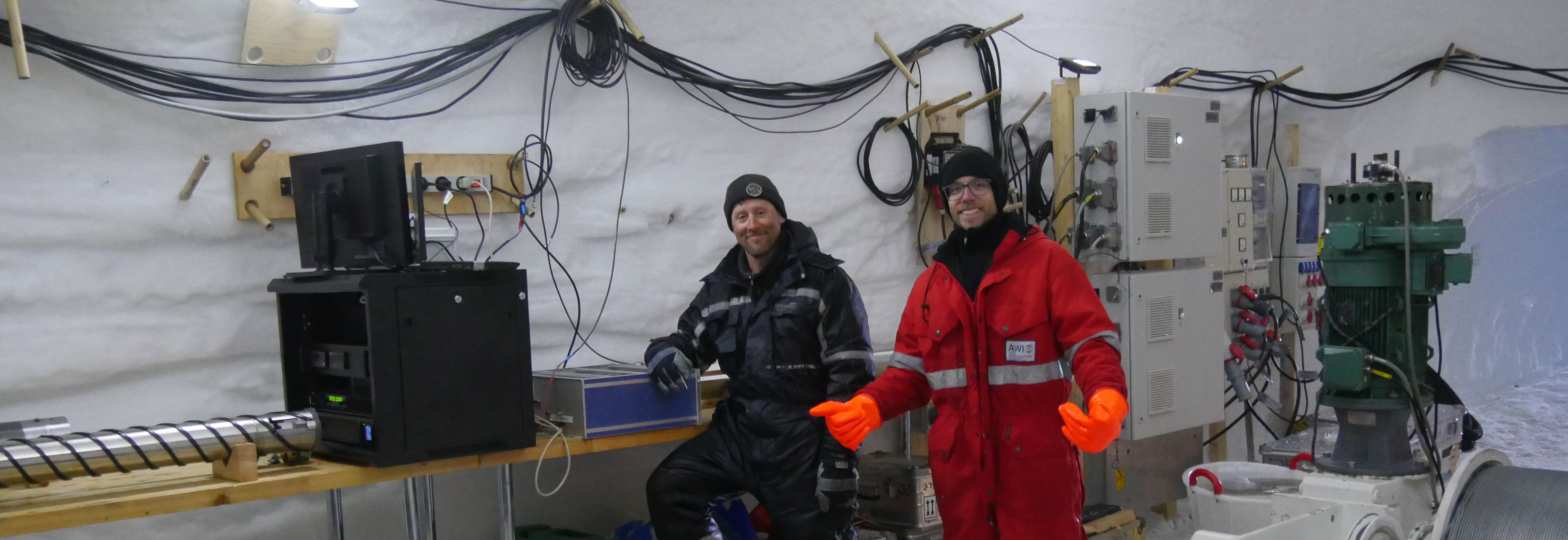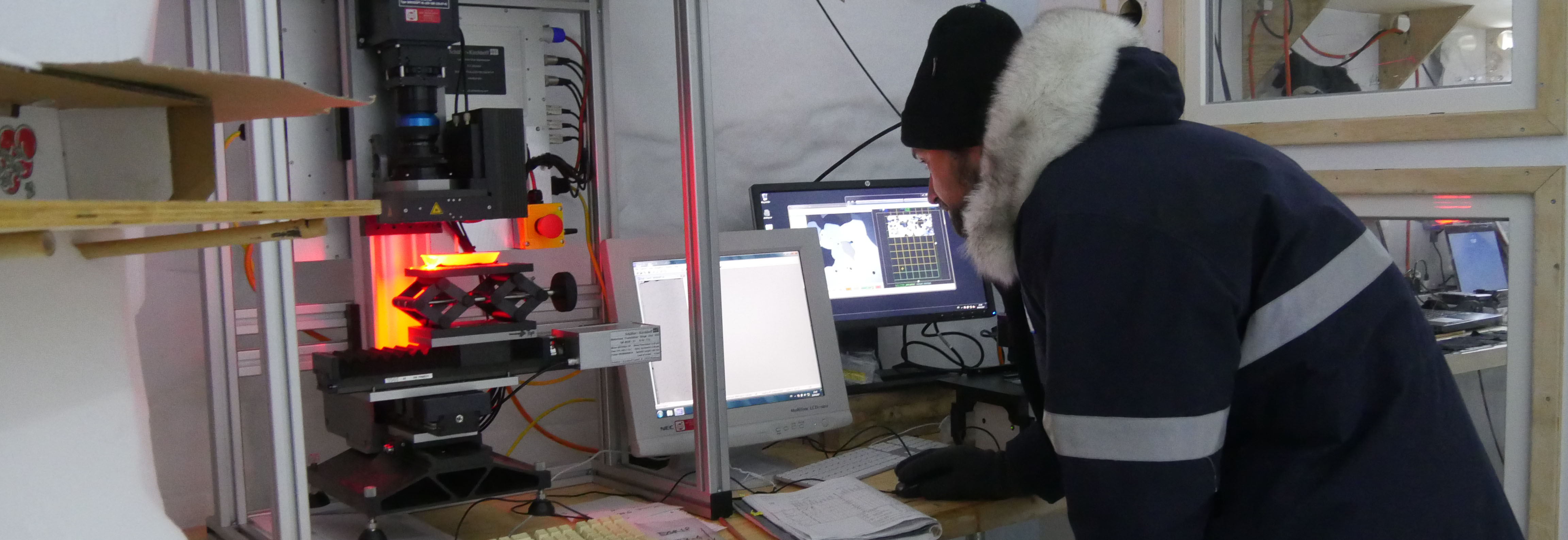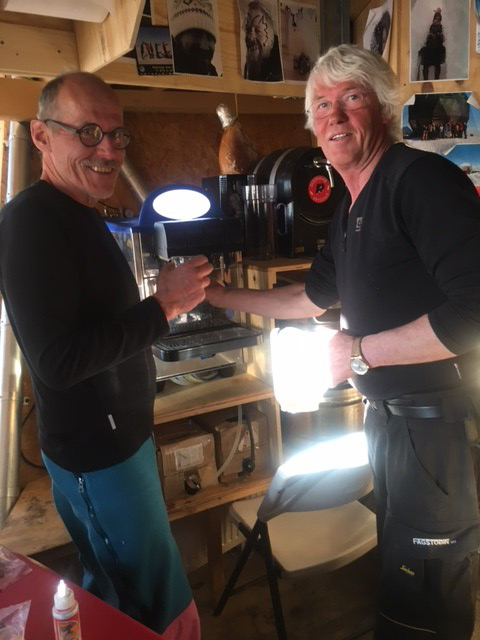
Trevor and Jan looking into the old drill electronics using colorful gloves
New Soda machine installed
The deep drilling appears to be in a stable mode with almost 22 m of high quality core drilled today. So far there have been no signs of brittle ice. The science trench processed ice down to 350 m depth until noon when they swapped to process the upper 100 m of main core that had been stored unprocessed earlier in the season.
At the firn gas site there is slow but steady progress. Bottles of various sizes are being filled with air samples from the bore hole. We are expecting airplanes late next week, so Chris has been on the skiway grooming with the beam groomer all day.
We have received a new soda machine in camp. Due to a fabrication error, it burned a transformer as it was plugged in. With a number of highly qualified personnel in camp a replacement component was found, the error was corrected, and we now have soft drinks!
What we did today:
- Deep drilling core length: 21.84 m
- Logging depth: 410.43 m
- Processing depth: 340.45-350.35 m and 13.75-33.55 m
- Water isotopes depth: 260.15 m
- Firn gas sampling depth: 14 m
- Preparing for installation of RADIX casing
- Water vapour, methane, aerosols, snow and boundary layer measurements
- Beam groomed skiway and apron
- Repaired soda machine
Ad. 1. Today we drilled 20 m in two shifts, celebrating 400 m twice with shots in the workshop (logging depth and drillers cable depth). The Blue Morning team consists of Trevor and Nicolas. Nicolas has been developing the surface software between runs to improve the visualization of the borehole and drill movement, both for the drill operator and for public outreach in the Dome. The Red Evening team consists of Mattias and Jan, who drill steadily into the night, after using the afternoon hours to test their own surface drilling equipment. Deep drilling today showed improved core breaks. We have been experiencing beautiful bottom breaks, however these would also at times have internal fracturing at the core dogs, and in unlucky cases, this piece between the core dog fracture and the bottom break (ca. 10 cm) would come loose and be found on the next run as a floater that needed to be fished. Sage advice from Steff back home helped us here. Meanwhile, Raymo carefully re-sharpened a set of slightly damaged step cutters, thus reducing their effective cutting pitch, slowing the drill penetration rate. It is slow but effective and stable, and gives nice cores and it coincides with avoiding the bottom breaks today. Mattias also began setting up a second drill head consisting of standard cutters that will be mounted on the second core barrel. As with NEEM, we will aim to start with a pitch of about 2.4 mm using these standard cutters. We continue to use the simple HT pressure tube, and with this we can find a good consistent rhythm which was lacking so far with the EGRIP prototype electronics. We are consuming drill liquid at about a rate of 15 L per meter drilled, which corresponds to an overall loss of ca. 10-15%. This is an improvement over NEEM so far, and we think we can reduce waste further as we become accustomed to the chips melter procedure. With the Coasol-Estisol240 mixture separation from water is not complete upon melting, and a refreezing step is necessary to remove the remaining water. Clear pancake ice forms and clear drill liquid can then be recycled.
Weather: Overcast in the morning and clear sky in the afternoon and evening. Good outdoor working conditions. Temp. -10°C to -20°C. Wind 2-8 kt starting W and turning S.
FL, Anders Svensson and Chief driller Trevor Popp

Jan analyzing ice crystal sizes (left) and orientations (right) in the back of the science trench. Because we are in an ice stream we expect the crystal orientation pattern to be different from that of the other deep Greenland ice cores that were obtained close to the ice divide.

The science trench processing ice cores in between two celebrations

New Soda machine operational
| ← Previous entry | Next entry → |
